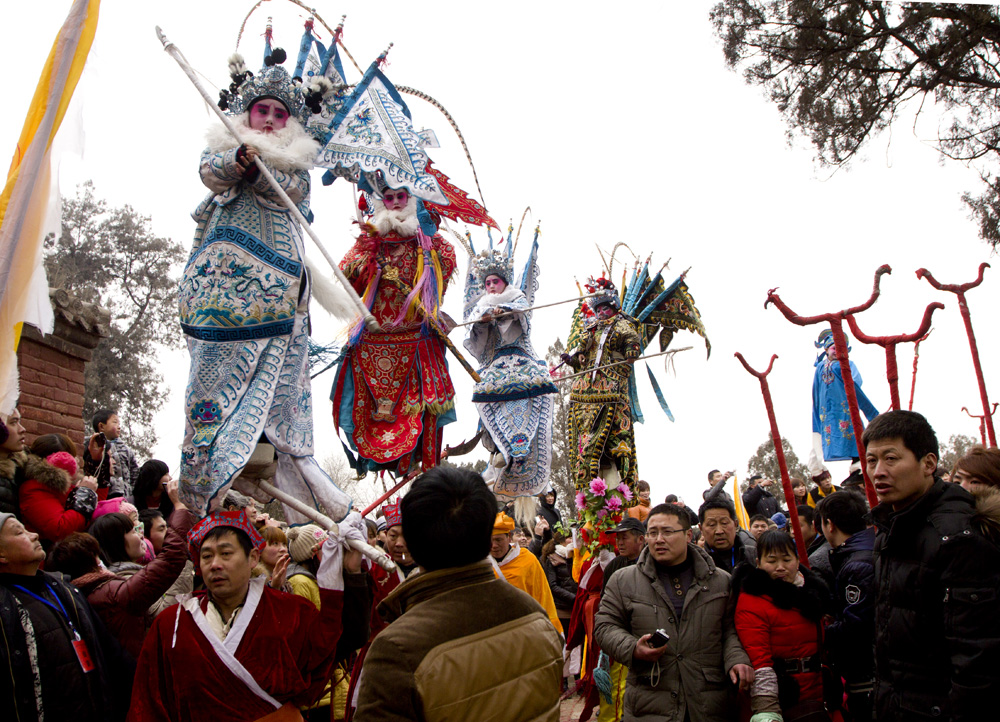The Xunxian Temple Fair and shehuo: from religious ceremony to popular festival

Stilt walking at the Xunxian Temple Fair
A small county in northern Henan Province with centuries of history, Xunxian is home to the first among four internationally famous temple fairs in North China.
The Xunxian Temple Fair falls in the first lunar month and is renowned for its shehuo, a traditional Chinese folk celebration and carnival. She refers to the deity of land and huo means the lord of fire. Based on the combination of she and huo, etymologists believe shehuo originated from the sacrificial culture in ancient China.
During the Wei, Jin, Northern and Southern Dynasties (220-589), Buddhism and Taoism simultaneously flourished in China. Many temples were constructed on Dapi Mountain in Xunxian during this period. Gradually the temple fair evolved as locals streamed to the mountain to worship Buddha statues, shrines and temples in the first lunar month each year. The Xunxian Temple Fair became famous worldwide because of the potent incense burnt all over Dapi Mountain during the fair.
Shehuo, held on both the 9th and 16th days of the first lunar month for the birthday of deity of Heaven and the Lantern Festival which, respectively, is the climax of the Xunian Temple Fair. Huge crowds gather on Dapi Mountain to celebrate on these days, and the joyous and festive atmosphere can be felt through the entire county. As it has evolved over the centuries, closely tied to the Xunxian Temple Fair, shehuo has gradually become a carnival for both deities and the common people. Today, the festival performances--lion dancing, stilt walking, Yangko opera and dragon lanterns--combine folk stories, ancient history and legends, and even the rich military customs of Xunxian, making the fair a real festival for local people instead of just a ceremony for worship.
Xu Chunyan is from Henan Academy of Social Sciences.
The Chinese version appeared in Chinese Social Sciences Today, No. 588, April 25, 2014
Translated by Zhang Mengying
Revised by Charles Horne
